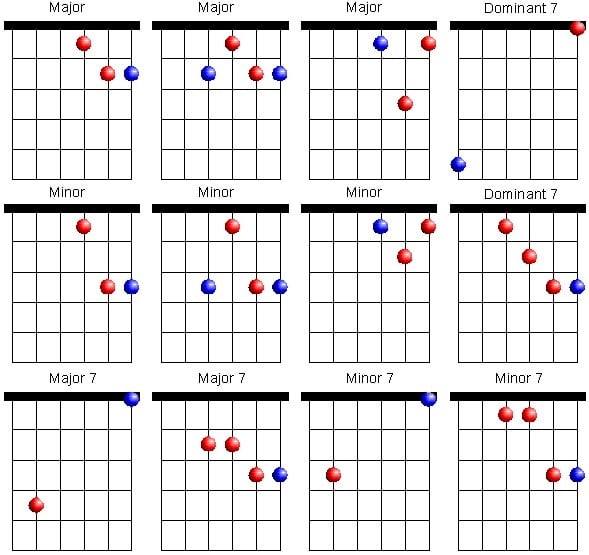
You can use these chords to add some extra flavour, brilliance or spice to your songs. This top 12 does change from time to time, nevertheless these chords sound amazing, each in their own right. I couple of years ago I wrote a similar post on this topic 10 Ways to Play the Most Beautiful Open Chord Shapes, but today I want to share with you my personal top 12 favourite sounding chords. I love sitting in my comfty chair, strumming a couple of those chords, fiddling around with the sounds, adding or lifting some fingers here and there, and see where it takes me and how it evolves into a piece of music. It’s one of the triggers that makes me want to grab my guitar daily. The numbers next to the E (E2, E4 etc.) is the fret that you want your first finger on.There are so many beautiful sounding chords you can play on the guitar. Note that the actual names of the chords are not used, because some of them are just too darn long.

Be sure to experiment on your own and come up with your own chord progressions. Here are a few examples to give you some ideas of the sounds that you might get using this technique. The chords at the frets not indicated (5,7,10,12) can be used as passing chords (a quick chord used to connect to other chords) but if you just play them by themselves, they just sound like you are playing some wrong notes. They can sound very tense, and may seem like they need to move somewhere, but it’s a good tension. All of the chords that are indicated sound good by themselves. You may be wondering, “why did you leave out the chords at the 5th, 7th, 10th, and 12th frets?” Play them and see what you think. Cmaj7/E for instance is pronounced “C major 7 slash E”.

This’s why you see a “/E” after every chord symbol. When you are playing these chords, the bass note for all of them is an E (the open 6th string). Use your ear, move the E chord shape to the different frets indicated.Īnything that you see other that a letter (ex add 9, maj7, add #11) is because of how the open first string (E) and open second string (B) relate to the major chord shape on the 5th, 4th and 3rd strings. You really don’t need to know the actual names of these chords make use of them. You are using the E chord shape for all of these chords, but these don’t sound like an E chord other than at the 1st fret and the 13th fret (1 octave higher). The idea of shape and sound are 2 different animals.


 0 kommentar(er)
0 kommentar(er)
